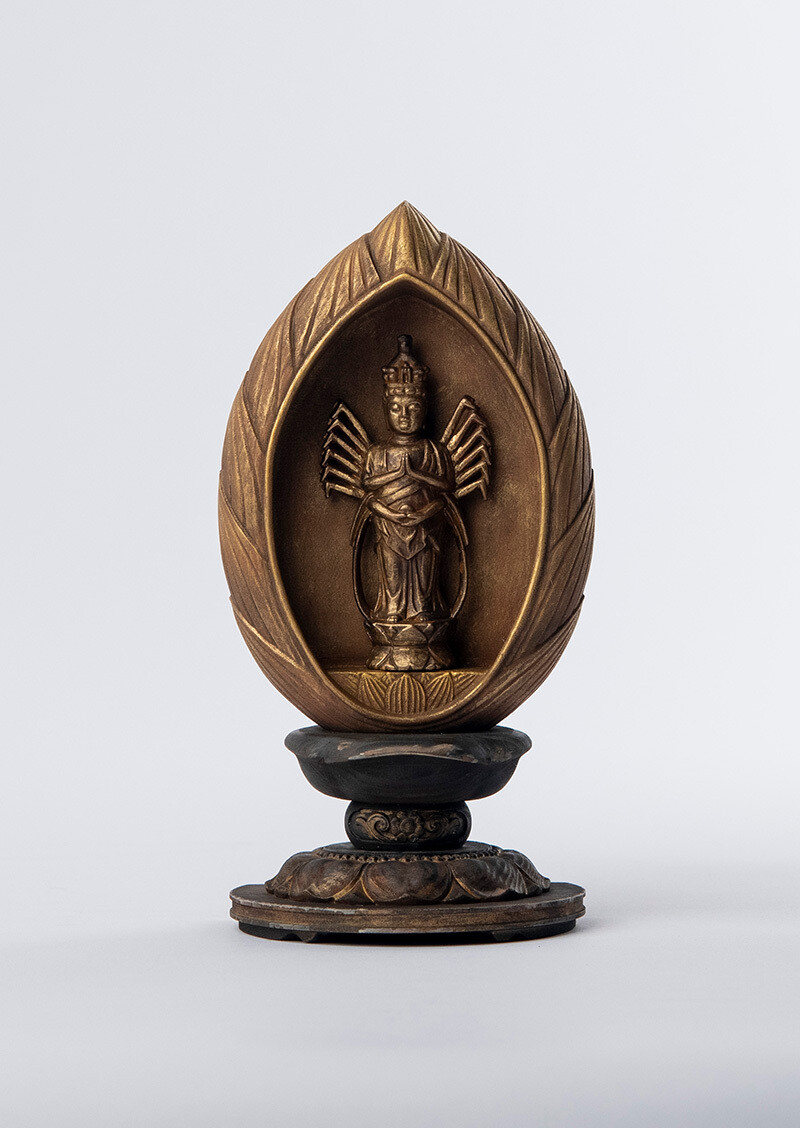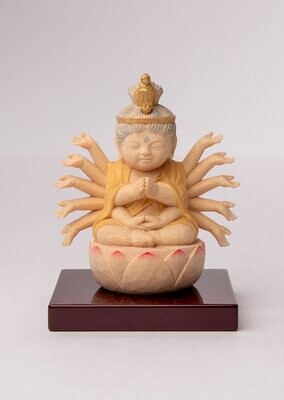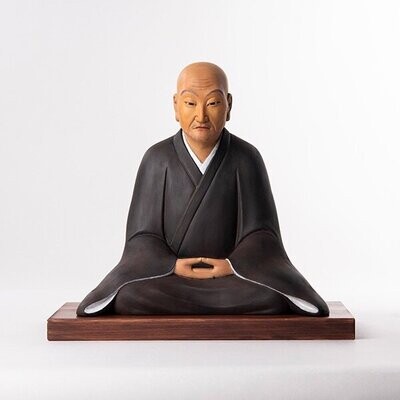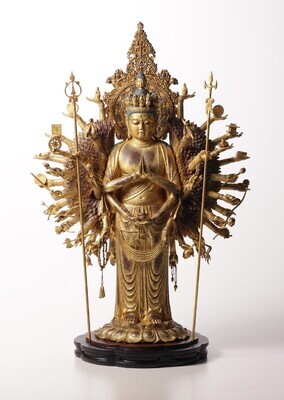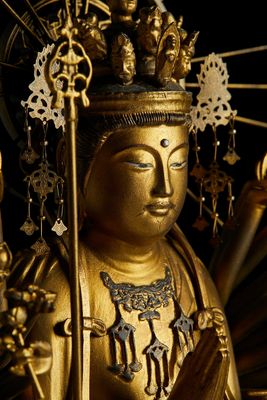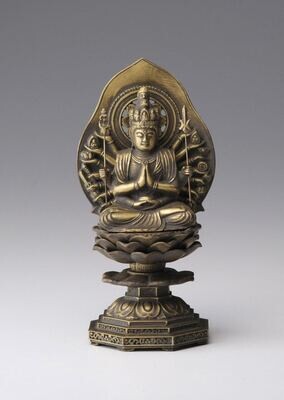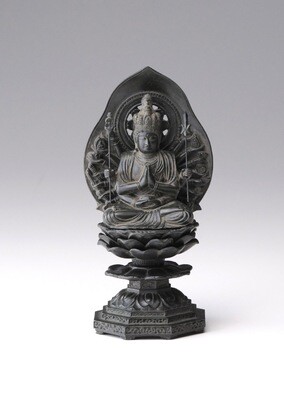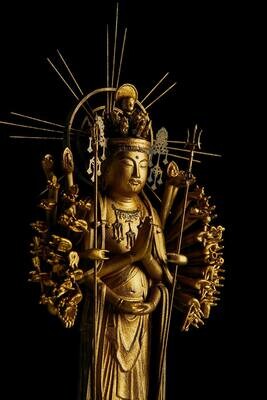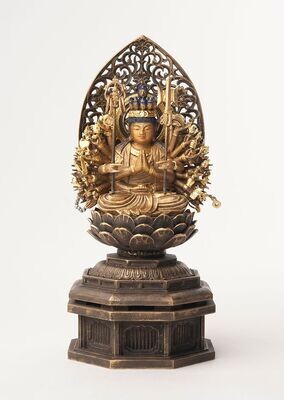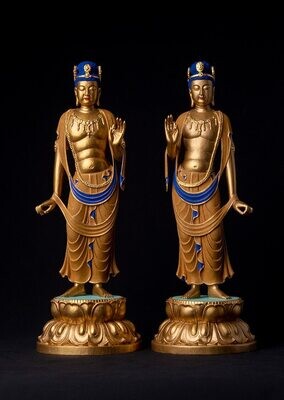Senju Kannon (金銅千手観音菩薩立像), Beloved By the Sengoku Japanese Military Commander Minamoto no Yoshitsune (源義経)
This Buddhist image is a reproduction of the standing gilt bronze statue of the Thousand-Armed Kannon, the guardian deity of the hero Minamoto no Yoshitsune, which was believed to have supported his miraculous military exploits. It is believed that the Buddhist altar and lotus seat were made during the Kamakura era, while the statue itself was crafted later. The sculpture has several features that distinguish it from similar depictions of the Thousand-Armed Kannon, like the clasped hands in front of the chest, a jeweled hand in front of the stomach, and 6 arms on the left and right sides for a total of 16 arms, likely because of its small size of only seven 7 centimeters.
The Thousand-Armed Kannon, formally known as the Thousand-handed, Thousand-eyed Avalokiteshvara, perceives all sentient beings who experience suffering with the thousand eyes on its palms and frees them from their suffering with its thousand hands. Its vast and limitless virtue and mercy earned it the titles "Mahavairocana Kannon" and "Lotus King," signifying the greatest of the Kannons. It is believed to have been worshipped during the reign of Yoshitsune because of its ability to fulfill wishes, ward off calamities, prolong life, and cure illnesses, among other worldly benefits. Yoshitsune dedicated the standing gilt bronze statue of the Thousand-Armed Kannon to a temple in Kyoto in the New Year of 1184.
- Size: 85(H)×44(W)×16(D)mm, 135g
- Material: Bronze
- Made in Japan
- You can choose the option to consecrate this statue (give an eye-opening ceremony) before it is shipped from Japan. If you choose this option, we will bring the statue to a Japanese temple, and pay them the necessary fees so that your statue is properly consecrated. The temple will issue a certificate of proof with your name on it, which will also be shipped together with your statue
- Shipped globally from Japan by using DHL. DHL is the world-class shipping services provider who makes international delivery a fast, smooth, and hassle-free experience. Delivery time can be faster than when shopping at an e-commerce website in your country, and of course your package will be covered by insurance. You can check the shipping cost for your entire order before you make a purchase
